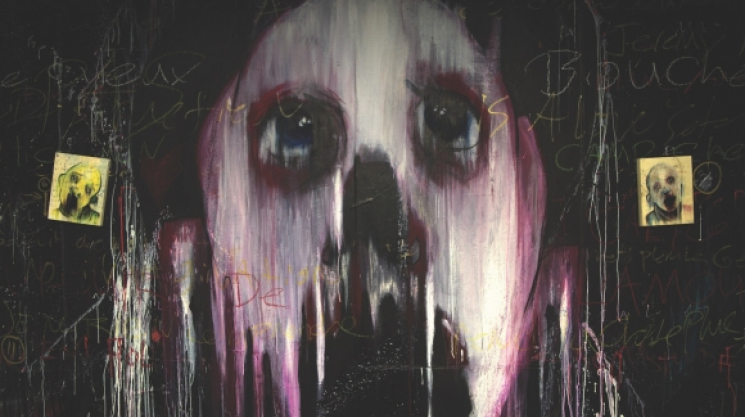
Wed, 06/08/2016 - 13:58 by karyn
In a society saturated with visual imagery, Kristofer Dompierre believes one of the most important things as an artist is "finding a balance between selling out and confining yourself to your own private world.” Dompierre’s portfolio has grown quickly during the break he's taken from his Visual Arts & Media baccalaureate to consider his career choices and options. His most recent work — he has an ongoing exhibition at the Fresh Paint Gallery in Montreal — plays with textures and matter, showing a strong sense of drama. "It's not only ghastly. It's playing with the notions of what's beautiful and what's ugly." Influenced by anything and everything all at once, he started out being a big fan of Picasso and Andy Warhol. He then later opened up to the world and developed a strong interest for the Baroque and Renaissance eras. Understandable, knowing anatomical art produced during these times still exerts a powerful fascination for many of today's contemporary artists questioning bodily representation. For Kristofer, who has a tendency towards macabre and ghastly art, understanding human anatomy and proportions is crucial; it's what gives a high quality visual rendition. To this he adds that once you master a technique or comprehend what it is you're painting — tone colours, skin textures, etc. — you can paint whatever you want as the possibilities become endless.
Performance art — a discipline Kristofer Dompierre has been practicing for the past eight years — is great for provocation as what goes on between an artist, the human body and the public is an ongoing dialogue. Known as a form of conceptual art rejecting a clear narrative, art historian RoseLee Goldberg describes this art form as "a medium that challenges and violates borders between disciplines and genders, between private and public, and between everyday life and art, and that follows no rules.” "Most people aren't used to performance art,” says Kristofer. Nonetheless, it is a great art form to emphasize the body's role in an artistic production. It turns into a visual evidence of the artist's very own existence. For the Montreal-based artist, the appeal for it resides in its singularity and the infinite possibilities of actions.
Generally speaking, Kristofer not only sees art "as a form of therapy but also as a simple way to vent." In an ideal world, he wishes art was created based on personal reasons. Moreover, he questions the authenticity of the creative process when the sole purpose of making art is for others. However, he does moderate his wishes and beliefs. If the work is too intense, people can have a hard time relating to it. For the most part, Kristofer's art is a mental auto-portrait of the mindstate he finds himself in when creating. "[Painting] is not something I always do, but never do I feel obligated to create. I paint when I feel like it." And although he prefers performance art because it intertwines a tad of everything and nothing all at once, any form of art brings him satisfaction. "There's nothing else in the world that I know of that could make me feel as good as art. It's just something I know how to do and enjoy doing."




Add comment